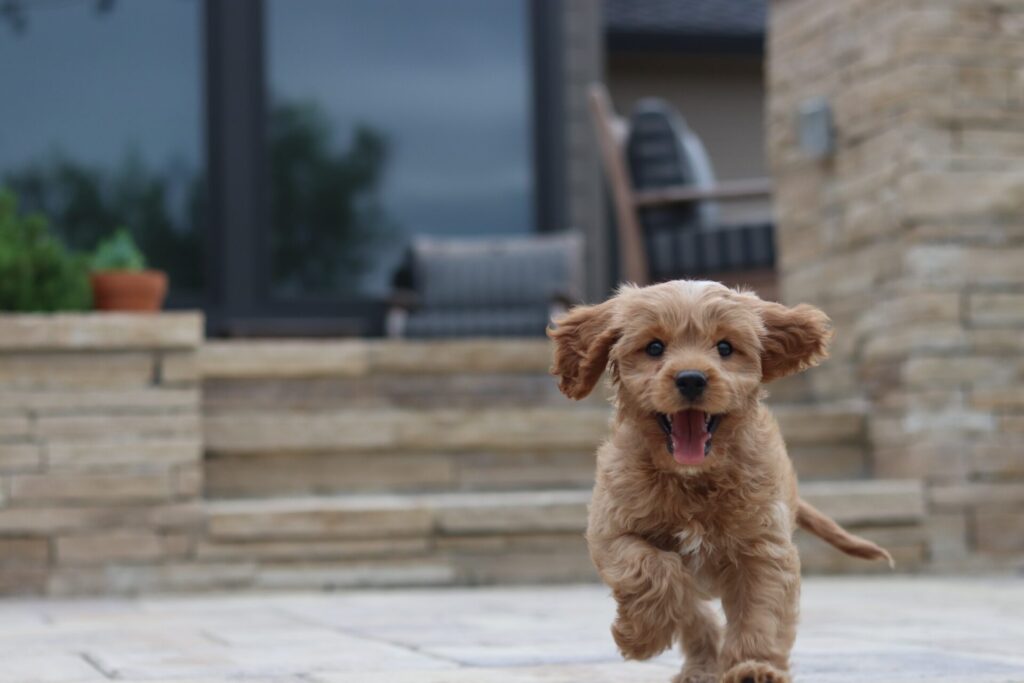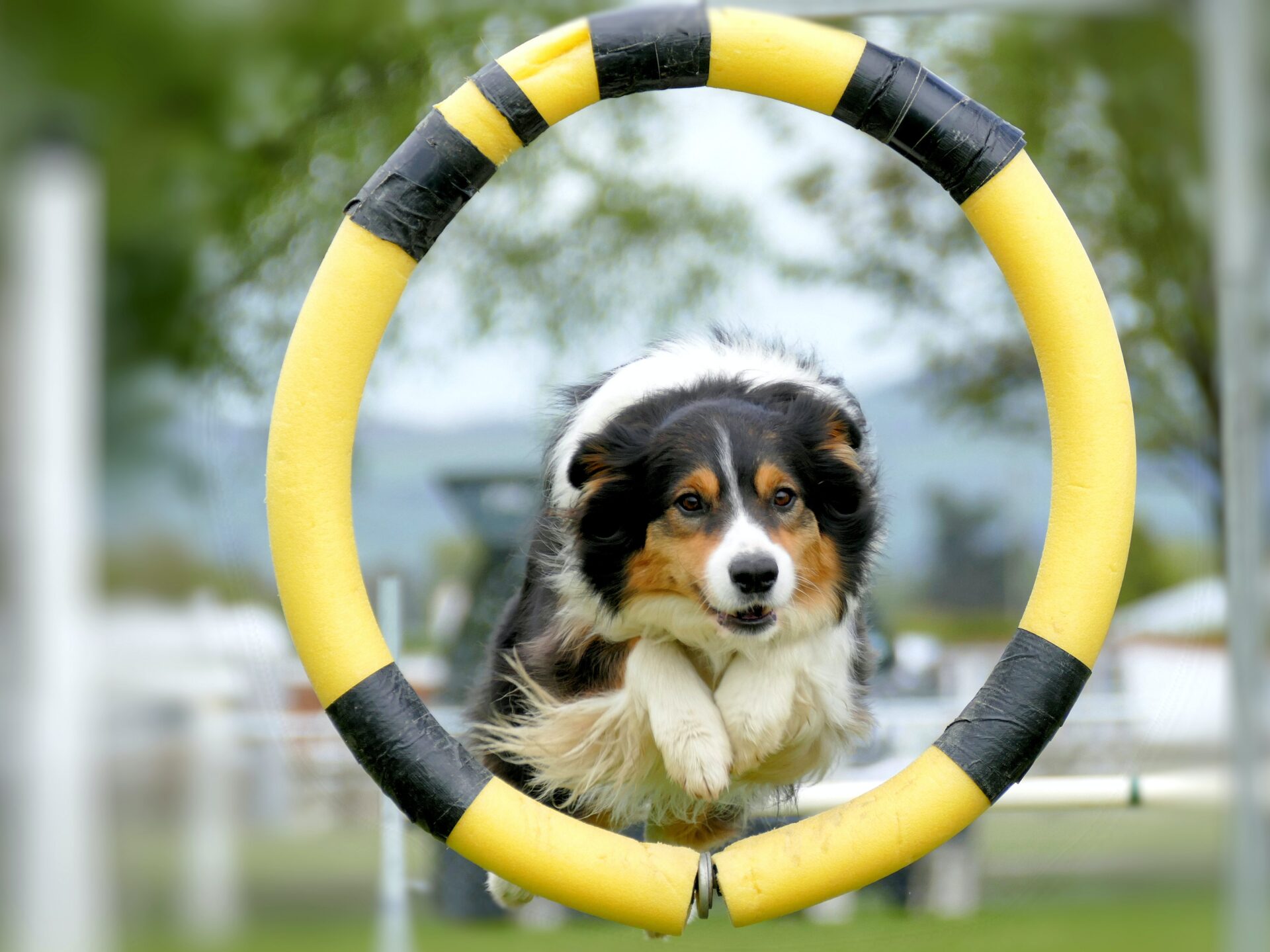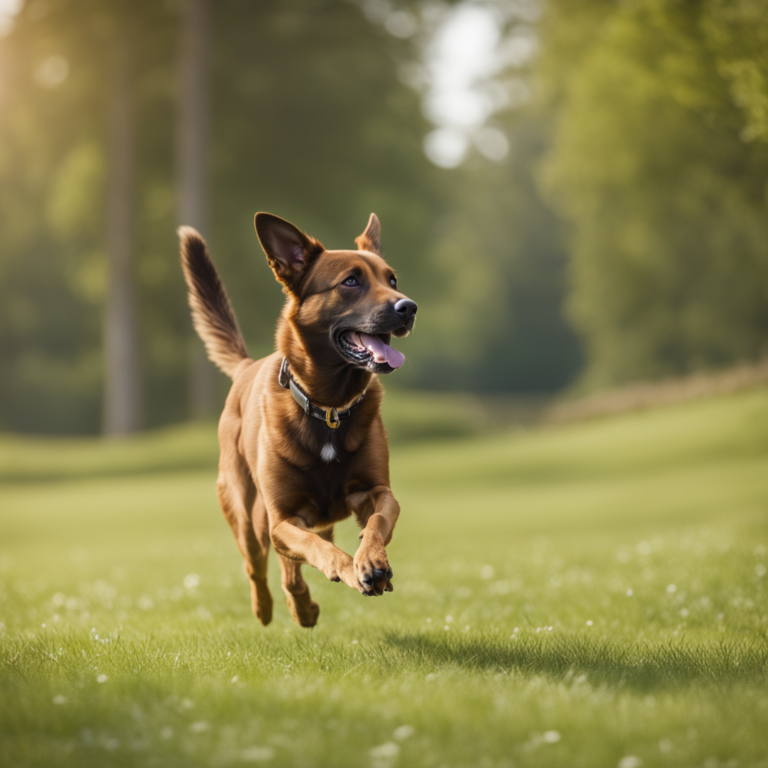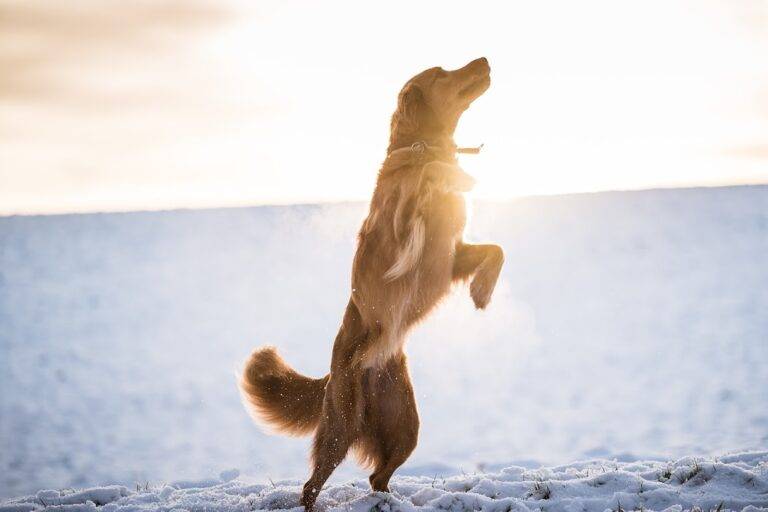Teaching Your Dog To Come When Called Is Essential

Understanding the importance of recall training for your dog
Teaching your dog to come when called is an essential aspect of responsible dog ownership. It involves teaching your dog to come back to you when called, regardless of the distractions or situations they may encounter. This command is crucial for their safety and well-being, as it allows you to have control over them in potentially dangerous situations. Whether you’re at the park, on a hike, or even just in your backyard, having a reliable recall command gives you peace of mind and ensures that your dog stays safe.
Furthermore, recall training can also enhance your bond with your furry companion. By investing time and effort into teaching them this command, you are actively building trust and strengthening your communication with them. Dogs thrive on positive reinforcement, and when they learn that coming to you results in praise, treats, or playtime, they will be more motivated to comply. This creates a positive and rewarding training environment, where your dog feels comfortable and eager to please you. Ultimately, recall training is not just about obedience; it is about building a strong foundation of trust and creating a harmonious relationship with your dog.
Building a strong foundation of trust and communication with your dog
Building a strong foundation of trust and communication with your dog is essential for any successful training program. Without trust, your dog may be hesitant to follow your commands, making it difficult to establish a solid training routine. Additionally, effective communication is crucial in conveying your expectations and reinforcing desired behaviors.
One way to build trust with your dog is through positive reinforcement techniques. This involves rewarding your dog for good behavior, such as obeying commands or exhibiting calm and relaxed behavior. By associating positive experiences with following your lead, your dog will start to trust that you have their best interests at heart.
Communication can be enhanced through consistent and clear signals. Use both verbal and non-verbal cues to convey your desires to your dog. For example, use consistent hand gestures, tones of voice, and body language to reinforce your commands. This will help your dog understand what is expected of them and build a stronger connection between the two of you.
By focusing on building trust and effective communication, you are laying the groundwork for a successful and harmonious training journey with your dog. This foundation will set the stage for future training techniques and ensure a positive and productive experience for both you and your four-legged companion.
Establishing yourself as a pack leader
Establishing yourself as a pack leader is essential for effective dog training and ensuring a harmonious relationship with your furry friend. Dogs are instinctively pack animals, and they look for guidance and leadership from their human companions. By assuming the role of a pack leader, you can establish boundaries, set rules, and create a sense of security for your dog.
One way to establish yourself as a pack leader is through consistent and clear communication. Dogs rely on body language and vocal cues to understand their place within the pack hierarchy. Use a firm but gentle tone when giving commands, and maintain a confident posture. Avoid shouting or using harsh punishment, as this can lead to fear and undermine your role as a leader. Remember, being a pack leader is not about being dominating or intimidating, but about earning respect and trust through effective communication.
Choosing the right training tools and equipment
When it comes to choosing the right training tools and equipment for your dog, it is important to consider their individual needs and temperament. One of the most commonly used tools is the leash, which provides control and guidance during training sessions. Traditional leashes, such as nylon or leather, are durable and versatile options that work well for most dogs. However, if you have a strong and powerful breed, you may want to consider using a sturdy and reliable chain leash.
Another essential tool for training is a collar. Traditional buckle collars are suitable for most dogs and can be easily adjusted for a comfortable fit. However, if you have a particularly strong-willed or stubborn dog, a head halter or a martingale collar may provide better control. These types of collars discourage pulling and can assist in redirecting your dog’s attention during training sessions. Additionally, harnesses are a popular alternative to collars, especially for dogs that tend to pull on the leash. They distribute pressure more evenly and can help prevent neck and throat injuries.
In addition to leashes and collars, there are various training aids available that can assist in teaching your dog basic commands and improving their recall skills. Treat pouches or treat bags are convenient tools for rewarding your dog during training sessions. They keep treats easily accessible while keeping your hands free for handling the leash and providing guidance. Training clickers can also be useful for marking desired behaviors and reinforcing positive associations. These small devices emit an audible click that signals to your dog that they have done something right, and are often paired with treats or rewards to reinforce the desired behaviors.
Choosing the right tools and equipment for training your dog is crucial in establishing effective communication and achieving your training goals. By understanding your dog’s needs and temperament, you can select the appropriate leash, collar, and training aids that will work best for you and your canine companion. Remember, the goal is to create a positive and rewarding training environment that promotes trust and mutual understanding between you and your dog.
Creating a positive and rewarding training environment
In order to create a positive and rewarding training environment for your dog, it is important to consider the atmosphere in which you conduct the training sessions. First and foremost, choose a quiet and calm space free from distractions, such as other pets or noisy household activities. This will help your dog to focus on the training and limit any potential sources of anxiety or excitement. Additionally, make sure the training area is safe and comfortable, with enough space for your dog to move around freely.
Furthermore, it is essential to create a positive association between training and rewards. Use positive reinforcement techniques, such as treats, praise, and play, to motivate and encourage your dog’s responses. Remember to offer the rewards immediately after your dog completes the desired behavior, as this will help reinforce the connection between the action and the reward. By consistently providing rewards in a timely manner, you will help your dog understand that training is a positive experience, making them more motivated and eager to participate.
Starting with basic obedience commands
Basic obedience commands are the foundation of your dog’s training journey. These commands serve as the building blocks for more advanced skills and behaviors, and they are essential for establishing a line of communication between you and your furry friend. When starting with basic obedience commands, it’s important to focus on a few key commands and avoid overwhelming your dog with too many instructions at once. Begin with simple commands such as “sit,” “stay,” and “lie down.” These commands help your dog learn self-control, patience, and how to respond to your cues effectively.
During the initial stages of training, patience is key. Keep training sessions short and frequent, as dogs have short attention spans. Be consistent with your commands and use positive reinforcement techniques, such as treats or praise, to reward your dog for successfully following the commands. Remember to use a clear and firm tone of voice when giving instructions, as this helps to establish your authority and communicate your expectations effectively. With time, practice, and consistency, your dog will begin to understand and respond to these basic obedience commands, setting the stage for more advanced training in the future.
Introducing the “come” command in a controlled environment
To start training your dog to respond to the “come” command, it’s important to establish a controlled environment. Begin by selecting a quiet and familiar space where there are minimal distractions. It could be your backyard or a quiet room in your house. Before beginning the training session, make sure your dog is calm and focused. This can be achieved by taking them for a short walk or engaging in some playtime to release any excess energy. By creating this controlled environment, you set the stage for a successful training session.
Once you have the environment set up, it’s time to introduce the “come” command to your dog. Start by getting their attention with a treat or a favorite toy. Hold it up and call their name followed by the command “come.” As they approach you, offer heaps of praise and reward them with the treat or toy. Repeat this process several times, gradually increasing the distance between you and your dog as they become more comfortable with the command. Remember to be patient and consistent in your training, reinforcing the idea that responding to the “come” command is a positive and rewarding experience.
Using positive reinforcement techniques to encourage your dog’s response
Positive reinforcement is a highly effective training technique that focuses on rewarding your dog for desired behaviors. By using positive reinforcement techniques, you can encourage your dog’s response and motivate them to consistently obey the recall command. This technique involves praising, petting, and offering treats or toys as a form of reward whenever your dog successfully comes to you upon command. The positive association created between the action of coming when called and the reward will strengthen their understanding and desire to repeat this behavior in the future.
One key aspect of using positive reinforcement is timing. It’s crucial to deliver the reward immediately after your dog responds to the recall command. This ensures that the reward is associated with the correct behavior and reinforces the desired response. By consistently rewarding your dog for coming when called, you are building a positive association and increasing the likelihood of them repeating this behavior in various situations and environments. Keep in mind that every dog is different, so finding the most enticing rewards for your furry friend may take some trial and error.
Gradually increasing distractions during training sessions
As your dog becomes more proficient in responding to the “come” command in controlled environments, it’s important to gradually increase the level of distractions during training sessions. This will ensure that your dog learns to listen and obey regardless of the environment or circumstances.
Start by introducing mild distractions, such as minimal noise or movement, while practicing the recall command. Once your dog consistently responds to your command in this setting, gradually add more challenging distractions, such as other people or animals nearby. Keep in mind that it’s crucial to always prioritize your dog’s safety and well-being during training sessions, so never expose them to overwhelming or dangerous distractions too quickly.
Transitioning from controlled environments to real-world scenarios can be challenging for both you and your dog. However, by gradually increasing distractions and providing consistent training, you can help your dog master the recall command in any situation.
Incorporating play and fun into recall training
Incorporating play and fun into recall training is not only enjoyable for your dog, but it also helps to reinforce positive behavior and strengthen your bond. One way to make training sessions more engaging is by using interactive toys or games. For example, you can play a game of fetch, where you throw a ball or a toy and call your dog to return it to you. This not only exercises their physical abilities but also encourages them to come when called. Similarly, you can incorporate games like hide-and-seek, where you hide and call your dog to find you. These activities not only stimulate their cognitive skills but also reinforce the importance of responding to your recall command.
Another way to make recall training fun is by using treats and rewards as incentives. You can use high-value treats that your dog loves and give them as a reward when they come to you promptly. This positive reinforcement technique motivates your dog to associate coming to you with something pleasant and rewarding. Additionally, you can use praise, verbal cues, or even a clicker to acknowledge their good behavior and make them feel appreciated. By creating a positive and rewarding training environment, your dog will look forward to the training sessions, making the recall command an enjoyable experience for both of you.
Implementing consistency and repetition in your training routine
Consistency and repetition are key elements in any dog training routine. Dogs thrive on routine and structure, so it’s important to establish a consistent training schedule and stick to it. This means setting aside specific times each day for training sessions and following the same sequence of commands or exercises. Repetition helps reinforce the desired behaviors and allows the dog to become familiar and confident in performing them.
During training sessions, it’s crucial to repeat the commands or exercises multiple times, ensuring that the dog fully understands what is expected of them. This repetition helps to reinforce the neural pathways in the dog’s brain, making the behavior more ingrained and automatic over time. It’s important to remember that dogs learn through repetition and consistency, so be patient and persistent in your training efforts. By implementing consistency and repetition in your training routine, you are setting a solid foundation for your dog’s learning and progress.
Avoiding common mistakes that may hinder your dog’s progress
One common mistake that dog owners often make when training their dogs to recall is using punishment or negative reinforcement techniques. This can create a negative association with the recall command and make your dog less likely to respond in the future. Instead, focus on positive reinforcement and rewards to encourage your dog’s response. Use treats, praise, and play to motivate and reward your dog for coming when called. This will help reinforce the desired behavior and make the recall command a positive experience for your dog.
Another mistake to avoid is having unrealistic expectations about your dog’s progress. Remember that training takes time, patience, and consistency. Some dogs may learn quickly, while others may need more time to understand and respond to the recall command. Be patient with your dog and celebrate small successes along the way. Avoid becoming frustrated or punishing your dog if they don’t respond immediately. Instead, continue to practice positively and consistently, gradually increasing the difficulty level as your dog becomes more proficient.
Troubleshooting common challenges in recall training
Common challenges may arise during recall training, making it important to troubleshoot and address them effectively. One common challenge is a lack of consistency in training sessions. Dogs thrive on routine and repetition, so inconsistent training can lead to confusion and hinder progress. To combat this, it is crucial to establish a regular training schedule and stick to it. Consistency in the timing, duration, and frequency of training sessions will help your dog understand what is expected of them and reinforce their recall command.
Another challenge that can arise is distractions during training. Dogs are naturally curious and can easily get sidetracked by their environment or other animals, making it difficult for them to focus on recall commands. To tackle this challenge, it is important to gradually introduce distractions during training sessions. Start in a controlled environment with minimal distractions, and as your dog becomes more proficient in their recall, gradually increase the level of distraction. This will help your dog learn to prioritize their recall command even in the midst of tempting distractions.
Understanding the importance of proper timing and tone of voice
Proper timing and tone of voice are vital aspects of effective dog training, particularly when it comes to teaching recall. Dogs rely heavily on non-verbal cues and the tone of our voice to understand our intentions. To ensure clear communication, it is important to use an appropriate tone and deliver commands at the right moment.
Timing plays a significant role in recall training. When teaching your dog to come when called, it is essential to give the command at the precise moment when they begin to show signs of distraction or disinterest. By calling your dog before they become completely absorbed in an activity, you increase the chances of a successful response. Additionally, reinforcing the command with a positive tone of voice can encourage your dog to associate the recall cue with a pleasant experience, further strengthening their response over time.
Incorporating proper timing and utilizing a consistent tone of voice during recall training can significantly improve your dog’s responsiveness and understanding. By being mindful of the moment you give the command and using a positive and encouraging tone, you enhance the clarity of your communication, facilitating a stronger bond and more effective training sessions.
Utilizing leash and long-line training techniques
Leash and long-line training techniques are valuable tools for teaching and reinforcing recall skills in your dog. The leash provides a physical connection between you and your dog, allowing you to guide their movements and ensure their safety during training sessions. By attaching a long line to your dog’s collar or harness, you can gradually increase their freedom while maintaining control and preventing them from running off.
When using a leash or long line during recall training, it is essential to remain patient and calm. Start in a quiet and controlled environment, such as a fenced yard or an enclosed space, and call your dog to you using a clear and consistent command. Gently guide them towards you by applying gentle pressure on the leash or long line if necessary. Remember to praise and reward your dog for coming to you, reinforcing the positive association with the recall command. With consistent practice, your dog will learn to respond reliably to your recall command even when off-leash in more challenging situations.
Fostering a strong bond and motivation between you and your dog
Creating a strong bond and fostering motivation between you and your dog is essential for successful recall training. Dogs are pack animals by nature, and they thrive on social connection and a sense of belonging. By establishing yourself as a reliable and trustworthy leader, you can build a deep bond with your furry friend. Engage in activities that strengthen your relationship, such as daily walks, play sessions, and positive reinforcement training. Spending quality time together not only builds trust but also enhances your dog’s motivation to listen and respond to your commands.
To foster motivation, it is important to understand what motivates your dog. Every dog is unique, so take the time to discover what really gets their tail wagging. Some dogs are highly food-motivated, while others may be more driven by praise or toys. Experiment with different rewards during training sessions to find the ones that truly motivate your dog. By using positive reinforcement techniques, where desired behaviors are rewarded, you can maintain your dog’s enthusiasm and drive to perform well. Additionally, incorporating play and fun activities into recall training sessions can further enhance motivation and strengthen the bond between you and your furry companion.
Practicing recall in different locations and scenarios
The next step in your recall training journey is to practice in different locations and scenarios. This is crucial for ensuring that your dog’s response remains consistent and reliable, regardless of the environment. Start by selecting a quiet and familiar outdoor location, such as your backyard or a local park with minimal distractions. Reinforce the “come” command with positive reinforcement, using treats or verbal praise to reward your dog for a successful recall.
Gradually increase the level of distractions in the area, such as other dogs, people, or enticing smells, to mimic real-life situations. Practice in various settings, such as at the beach, on hiking trails, or in busy urban areas, to expose your dog to different sights, sounds, and smells. This will help your dog generalize their recall skills, making it more likely for them to listen and respond when it truly matters.
In addition to practicing in different locations, it is also important to incorporate various scenarios into your recall training. For example, simulate situations where your dog may be tempted to ignore the recall command, such as when they are playing with other dogs or investigating something interesting.
Train your dog to understand that coming to you when called is always the best and safest choice. This can be achieved by using a long-line or a leash for added control and safety during training sessions. Gradually increase the distance and duration of the recall, rewarding your dog for their prompt response and ensuring their success. By practicing recall in different locations and scenarios, you are setting your dog up for success and strengthening their ability to come when called, no matter the situation.
Gradually phasing out the use of treats and rewards
As your dog becomes more proficient in responding to the “come” command, you can start to gradually phase out the use of treats and rewards. This is an important step in the training process as it helps to ensure that your dog is responding to your command because of their natural desire to please you, rather than just for the sake of receiving a reward.
To begin this transition, you can start by reducing the frequency in which you give treats during recall training. Instead of rewarding your dog every single time they come to you, you can start to space out the treats, only giving them sporadically. This helps to reinforce the behavior without relying solely on treats. Additionally, you can start to introduce other forms of reward, such as verbal praise or a pat on the head, to further reinforce the desired behavior. Remember, the goal is to create a strong bond and motivation between you and your dog, so it’s important to make the transition gradual and ensure that your dog still feels appreciated and rewarded for their efforts.
Maintaining and reinforcing recall training throughout your dog’s life
As your dog grows and matures, it is essential to continue maintaining and reinforcing their recall training throughout their life. Recall is not a one-time lesson but an ongoing process that requires consistency and dedication. By doing so, you can ensure that your furry friend remains safe and obedient even in unfamiliar or potentially dangerous situations.
One way to maintain recall training is by regularly practicing the “come” command in different locations and scenarios. This helps your dog generalize the behavior and understand that they should respond to your call regardless of the environment. Gradually increase the level of distractions during training sessions, such as other dogs or people, to test their reliability. By challenging your dog in controlled settings, you can strengthen their recall skills and improve their responsiveness in real-life situations. It is important to remember that even if your dog is doing well with their recall, you should never assume they are fully trained. Consistently reinforcing the training will ensure that they remain responsive and reliable throughout their lives.
Celebrating your successes and enjoying the freedom and safety that comes with a well-trained recall command.
Having a dog that responds reliably to a recall command is not only a major accomplishment, but it also brings with it a sense of freedom and safety. Celebrating your successes in recall training is essential to reinforce the behavior and maintain your dog’s motivation. Whether it’s verbal praise, a pat on the head, or a tasty treat, acknowledging your dog’s obedience is important for their continued progress.
Enjoying the freedom and safety that come with a well-trained recall command opens up a world of possibilities for you and your furry friend. You can confidently take your dog off-leash in safe, designated areas, allowing them to explore and run freely while still remaining under your control. Additionally, a reliable recall command provides peace of mind, knowing that you can easily call your dog back to you in potentially dangerous situations or when they are approaching unwanted or potentially harmful objects or animals.
The bond between you and your dog will strengthen as you celebrate successful recall training moments and experience the newfound freedom and safety it brings. Don’t forget to take joy in your achievements and treasure the special moments that recall training can offer.
Teaching Your Dog To Come When Called Conclusion
Teaching your dog to come when called is a fundamental and invaluable aspect of canine training that enhances the bond between you and your furry companion. The ability to respond promptly to your command not only ensures your dog’s safety but also fosters a sense of trust and cooperation. Patience, positive reinforcement, and consistency are key elements in this training process.
As you invest time and effort into this essential skill, you pave the way for enjoyable and fulfilling interactions with your dog, creating a harmonious relationship built on mutual understanding and communication. Ultimately, the joy and satisfaction derived from a well-trained dog that reliably comes when called make the journey of teaching this command well worth the commitment.
FAQ:
Why is recall training important for my dog?
Recall training is crucial for your dog’s safety and well-being. It allows you to call your dog back to you in potentially dangerous situations, such as when they are approaching a road or encountering aggressive animals. It also helps build a strong bond and trust between you and your dog.
How can I establish myself as a pack leader during recall training?
To establish yourself as a pack leader, you should consistently enforce rules and boundaries, maintain a calm and assertive demeanor, and provide clear and consistent communication with your dog. This will help them see you as the leader and be more responsive to your recall command.
What are the right training tools and equipment for recall training?
The right training tools and equipment may include a long-line leash, a treat pouch, a clicker, and high-value treats. These tools help reinforce and reward your dog’s response to the recall command effectively.
How can I create a positive and rewarding training environment?
To create a positive and rewarding training environment, you should use positive reinforcement techniques, such as treats, praise, and play, to reward your dog’s successful recall. Avoid punishment or negative reinforcement, as it can hinder their progress and make training stressful.
How do I start with basic obedience commands before introducing recall training?
Before introducing recall training, it is important to establish basic obedience commands, such as sit, stay, and down, to build a foundation of discipline and understanding. These commands will lay the groundwork for successful recall training.
How can I gradually increase distractions during recall training sessions?
Gradually increasing distractions during recall training helps your dog learn to respond to the commands in various situations. Start in a controlled environment and slowly introduce distractions, such as other dogs or toys, while rewarding their successful recall.
How can I troubleshoot common challenges in recall training?
Troubleshooting common challenges in recall training can be done by identifying the specific issue, such as your dog not responding or getting easily distracted. Address the issue by adjusting the training environment, reinforcing the command with treats or praise, and seeking professional help if needed.
When should I phase out the use of treats and rewards in recall training?
You can start phasing out the use of treats and rewards once your dog consistently responds to the recall command in various environments and distractions. Gradually reduce the frequency of treats but continue to reinforce and reward their successful recalls occasionally.
How do I maintain and reinforce recall training throughout my dog’s life?
To maintain and reinforce recall training throughout your dog’s life, it is important to regularly practice the command in different locations and scenarios, provide occasional rewards and praise for successful recalls, and consistently reinforce the recall command during everyday interactions with your dog.
How can celebrating my successes in recall training benefit me and my dog?
Celebrating your successes in recall training not only reinforces positive behavior but also strengthens the bond between you and your dog. It creates a positive association with the recall command and encourages your dog to respond eagerly in the future, ensuring their freedom and safety.








